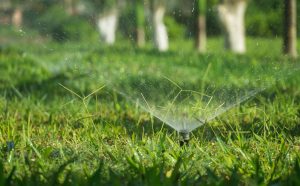Rain Gardens & Bioswales: Prevent Flooding and Improve Soil in Billings Yards
Montana’s wide-open skies and seasonal storms bring beauty—but they also bring water runoff, erosion, and potential flooding for homeowners, especially in areas like Billings. With more homeowners focusing on sustainable landscaping, rain gardens and bioswales are becoming popular tools for managing stormwater naturally, improving soil, and beautifying outdoor spaces.
At Horizon Landscaping, we’ve helped many homeowners in the Billings area design and install these features. Whether you’re looking to manage standing water or simply want to make your yard more eco-friendly, here’s what you should know.
What Are Rain Gardens and Bioswales?
Rain gardens are shallow, planted depressions designed to collect and absorb rainwater from roofs, driveways, and other hard surfaces. Bioswales, on the other hand, are more elongated channels—often lined with native grasses or rock—that slow and filter water as it flows across your yard.
Both features are designed to mimic natural processes, capturing and absorbing water into the soil instead of letting it run off into the street or flood your yard.
Why They Matter in Billings
Billings’ soil can range from clay-heavy to sandy, depending on your neighborhood. This variety, combined with changing precipitation patterns, makes proper drainage essential. Rain gardens and bioswales provide key benefits to local landscapes:
1. Flood Prevention
Heavy downpours can overwhelm traditional drainage systems. Rain gardens and bioswales act as natural holding areas, temporarily storing excess water and allowing it to seep into the ground slowly.
2. Soil Enrichment
These systems filter pollutants and improve the organic content of your soil over time. That’s especially important in parts of Billings with poor or compacted soil, helping lawns and plants grow stronger and healthier.
3. Support for Native Plants
Rain gardens are ideal places to plant Montana native species such as blue flax, blanketflower, and prairie coneflower. These plants are adapted to local conditions, require less water, and attract pollinators like bees and butterflies.
4. Reduced Runoff Pollution
Stormwater runoff can carry oil, pesticides, and debris into rivers and streams. A properly designed rain garden or bioswale filters out these pollutants naturally, helping protect our local water sources and wildlife habitats.
How to Get Started
Installing a rain garden or bioswale starts with understanding the natural flow of water on your property. Our team at Horizon Landscaping offers on-site drainage assessments in the Billings area to determine where these features would be most effective.
Here are some general tips to keep in mind:
Choose the Right Location: A gentle slope at least 10 feet from your home is ideal to prevent foundation issues.
Test Your Soil: Well-draining soil is important. If your soil retains too much water, we can improve it with soil amendments or adjust the design.
Plant Wisely: Select drought-tolerant and deep-rooted native plants. These stabilize the soil and thrive with little maintenance once established.
Maintain Regularly: Like any landscaping feature, rain gardens and bioswales need occasional weeding, mulching, and monitoring to ensure proper function.
Final Thoughts
Adding a rain garden or bioswale to your Billings yard is more than just a smart landscaping move—it’s an investment in sustainability and the health of your property. These eco-friendly features manage water naturally, support native ecosystems, and can even increase your home’s curb appeal.
If you’re ready to explore how these solutions can work in your yard, Horizon Landscaping is here to help from concept to completion.
Read Next: Wildlife-Friendly Landscaping: How to Attract Birds Without Inviting Deer




